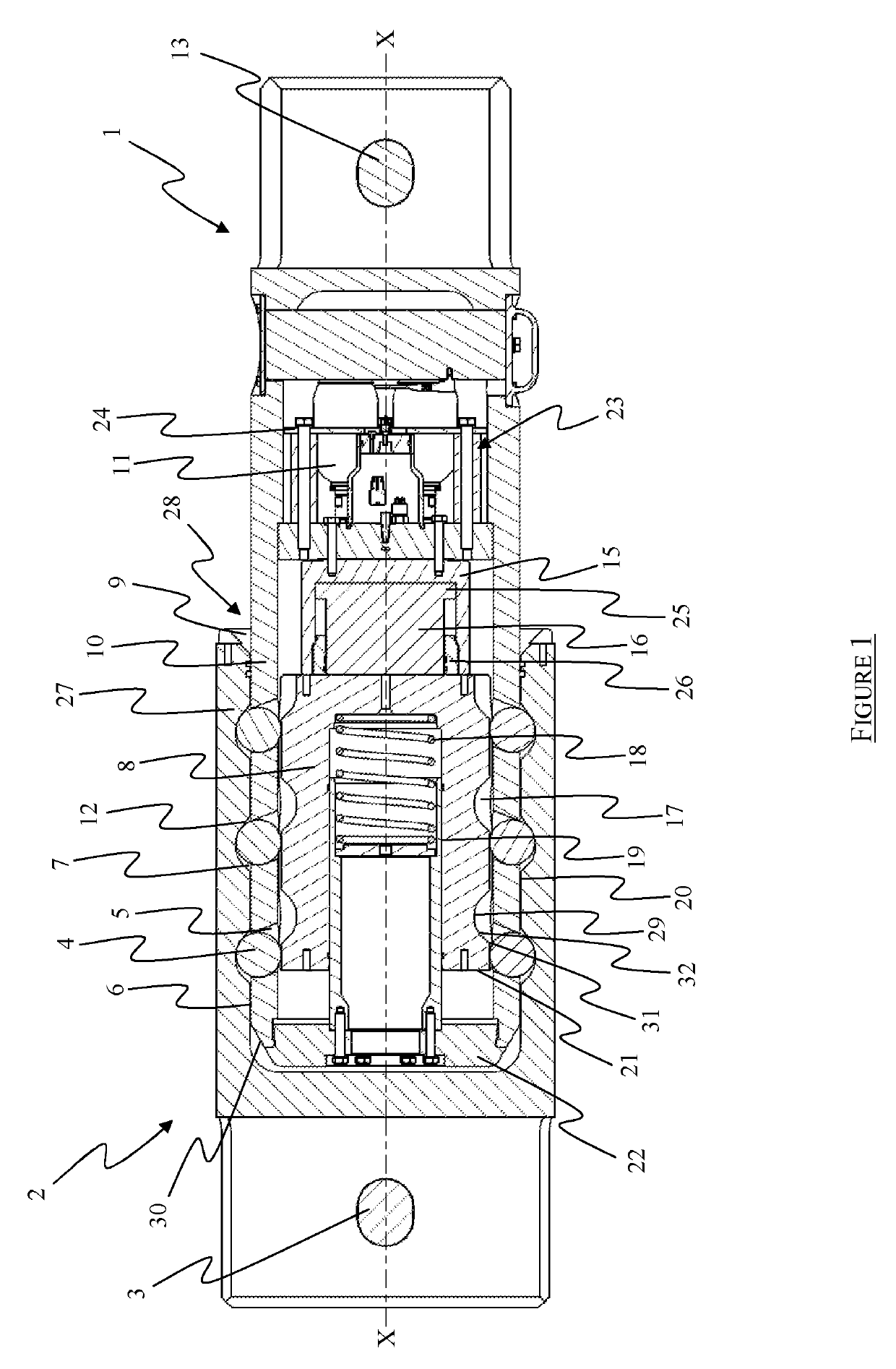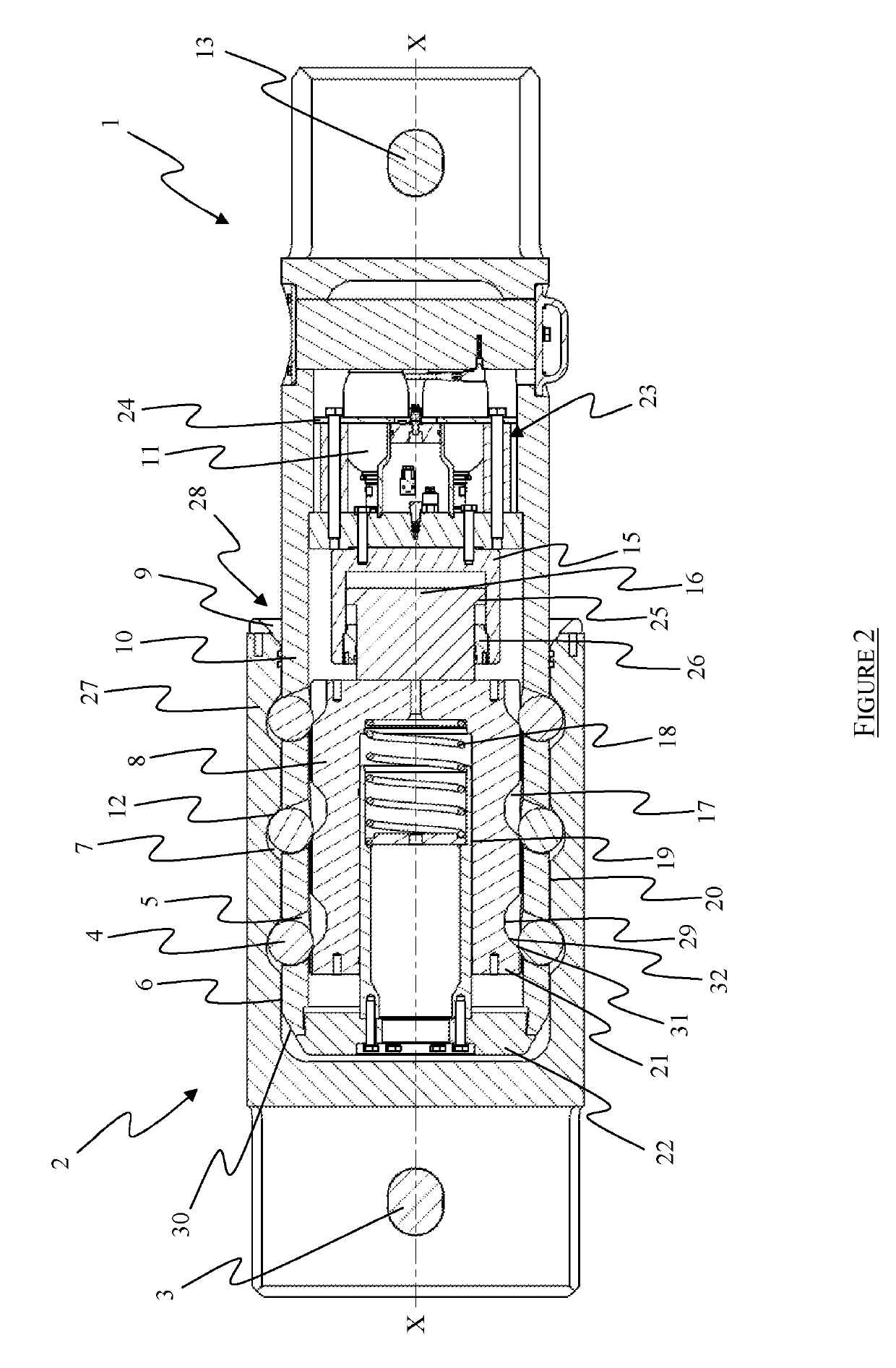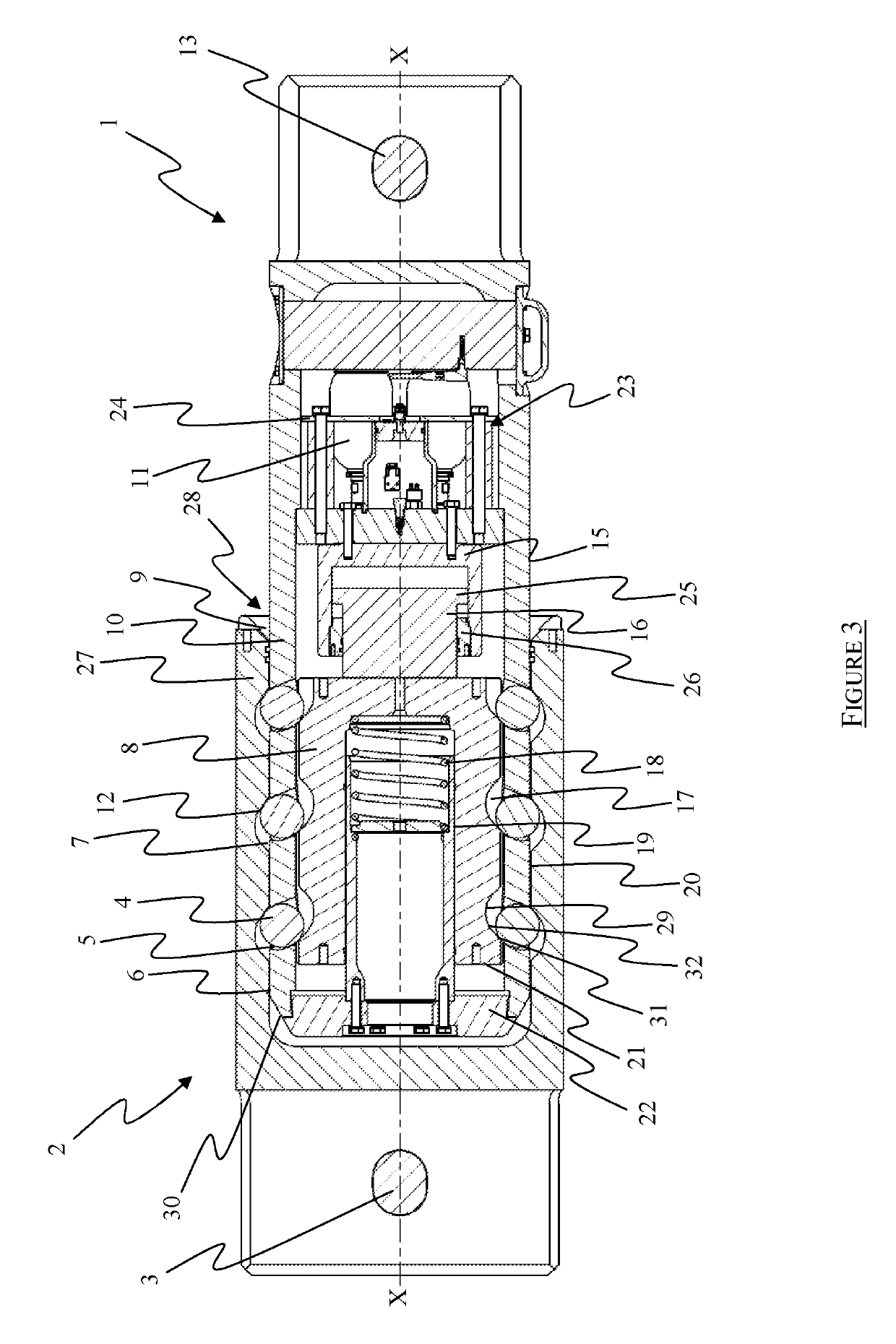A mooring connector
a technology of mooring connectors and connectors, applied in the direction of ropes and cables for vehicles/pulleys, anchoring arrangements, shackles, etc., can solve the problems of reducing down time, and reducing so as to reduce the likelihood of a connector being damaged, reduce the surface area or the mass of material, and release safely
- Summary
- Abstract
- Description
- Claims
- Application Information
AI Technical Summary
Benefits of technology
Problems solved by technology
Method used
Image
Examples
Embodiment Construction
[0031]In order that the invention may be more clearly understood an embodiment thereof will now be described, by way of example only, with reference to the accompanying drawings, of which:
[0032]FIG. 1 is a side cross-sectional view of a connector received in a complementary connector, with the locking member in a fully locked position and the connector locked to the complementary connector;
[0033]FIG. 2 is a side cross-sectional view of the connector and complementary connector of FIG. 1, with the locking member in a partially unlocked position and the connector locked to the complementary connector;
[0034]FIG. 3 is a side cross-sectional view of the connector and complementary connector of FIG. 1, with the locking member in a partially unlocked position;
[0035]FIG. 4 is a side cross-sectional view of the connector and complementary connector of FIG. 1, with the locking member in a partially unlocked position and spaced from the piston;
[0036]FIG. 5 is a side cross-sectional view of the...
PUM
 Login to View More
Login to View More Abstract
Description
Claims
Application Information
 Login to View More
Login to View More - R&D
- Intellectual Property
- Life Sciences
- Materials
- Tech Scout
- Unparalleled Data Quality
- Higher Quality Content
- 60% Fewer Hallucinations
Browse by: Latest US Patents, China's latest patents, Technical Efficacy Thesaurus, Application Domain, Technology Topic, Popular Technical Reports.
© 2025 PatSnap. All rights reserved.Legal|Privacy policy|Modern Slavery Act Transparency Statement|Sitemap|About US| Contact US: help@patsnap.com



